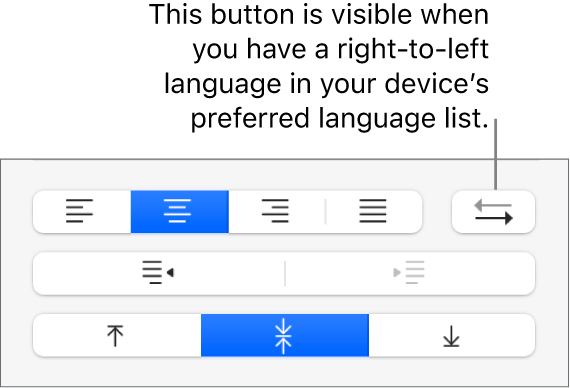Keynote User Guide for Mac
- Welcome
- What’s new
-
- Change object transparency
- Fill shapes and text boxes with color or an image
- Add a border to an object
- Add a caption or title
- Add a reflection or shadow
- Use object styles
- Resize, rotate, and flip objects
- Move and edit objects using the object list
- Add linked objects to make your presentation interactive
-
- Send a presentation
- Intro to collaboration
- Invite others to collaborate
- Collaborate on a shared presentation
- See the latest activity in a shared presentation
- Change a shared presentation’s settings
- Stop sharing a presentation
- Shared folders and collaboration
- Use Box to collaborate
- Create an animated GIF
- Post your presentation in a blog
-
- Use iCloud Drive with Keynote
- Export to PowerPoint or another file format
- Reduce the presentation file size
- Save a large presentation as a package file
- Restore an earlier version of a presentation
- Move a presentation
- Delete a presentation
- Password-protect a presentation
- Lock a presentation
- Create and manage custom themes
- Copyright

Use bidirectional text in Keynote on Mac
Keynote supports bidirectional text, so you can enter and edit text written from left to right (such as in English or Chinese) and from right to left (such as in Arabic or Hebrew) in the same presentation. To use bidirectional text, you must have at least one right-to-left language in your device’s preferred language list. To learn more, see Set up a keyboard or other input source for another language.
Although you can use any Keynote themes to create a bidirectional presentation, you can use themes designed specifically for another language. To see these themes, you must set the primary language of your Mac to that language. Choose Apple menu 
Change paragraph text direction
Go to the Keynote app
 on your Mac.
on your Mac.Open a presentation, then select text.
In the Format
 sidebar, click the Text tab.
sidebar, click the Text tab.In the Alignment section, click
 .
.The insertion point moves to the other side of the object, and the paragraph direction changes.

Enter text, then press Return at the end of the paragraph.
The next paragraph continues in the same direction. To change its direction, click
 .
.
If you select multiple paragraphs with different text directions and then click ![]() , the paragraphs are formatted to match the first paragraph in the selection.
, the paragraphs are formatted to match the first paragraph in the selection.
If you don’t see ![]() , you may not have a right-to-left language in your computer’s preferred language list. To add a language to your preferred language list, choose Apple menu
, you may not have a right-to-left language in your computer’s preferred language list. To add a language to your preferred language list, choose Apple menu 
![]() , then select a language.
, then select a language.